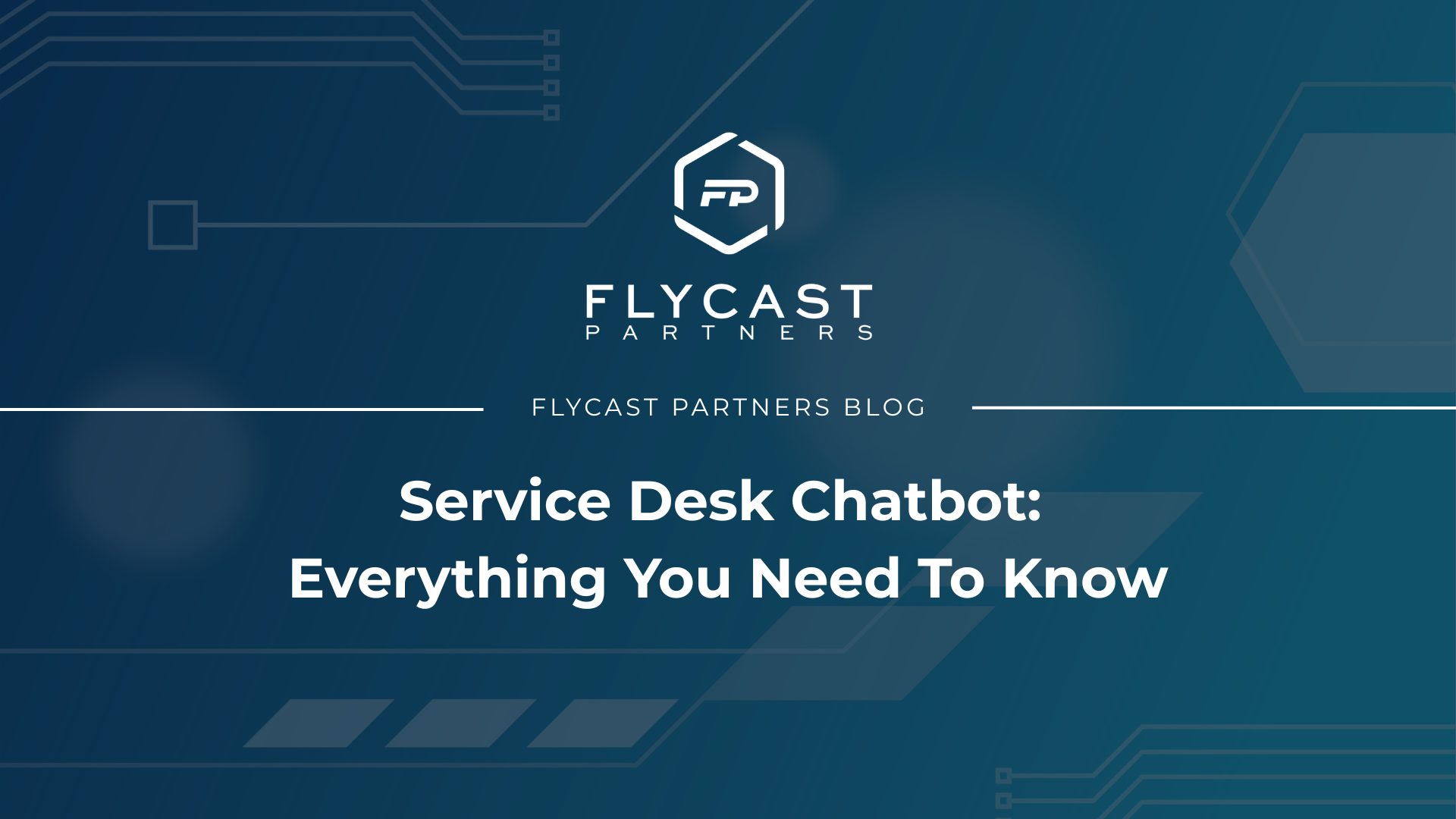Service Desk Chatbot: Everything You Need To Know
What Is a Service Desk Chatbot?
A service desk chatbot is a software solution designed to provide users with a human-like conversation when accessing information and resolving issues, serving as an additional avenue to communicate with IT support. Whether executing simple, automated commands or acting as a digital assistant for customer service, organizations can benefit by decreasing the volume of support activity required for the most common actions, incidents, and requests.
Read: Four Key Factors to Consider When Building a Chatbot.
With the ability to cater to varying user scenarios, organizations can build bots with well-researched and tailored answers, dynamic conversation flows, and plug in FAQs, knowledge bases, and solution articles into the conversational interface. In those instances when the conversation needs transferring to a support agent, the hand over to the live chat is seamless and nothing between the user and the organization is lost, ensuring there is a consistent and productive customer experience every time contributing to an increase in customer satisfaction.
What Are Service Desk Chatbots Used For?
For organizations challenged by managing the dramatic rise in remote users, chatbots provide end-users an additional, consistent method for receiving secure and personalized assistance in real time. When an organization uses chatbot technology, it provides an opportunity for legacy service desk resources to shift from being reactive to being proactive, creating a value-add operational vertical. If organizations integrate a bot with their self-service features, help desk software, and live agent support, it can function as a valuable internal resource enabling a consistent user experience and unifying the various communication channels within the IT Service Management platform. In addition, organizations providing support during non-traditional hours can leverage the chatbot as a reliable initial support channel to automatically resolve defined end-user inquiries.
Benefits for IT Support
By relying on a service desk chatbot, organizations and IT support can benefit from:
- Lower costs to resolution
- The ability to scale to meet demand
- Greater transparency of support activities
- Reduced wait times
- Less ticket volume
- Accelerated approvals
- Increased self-service resolutions
- Higher productivity levels
- Consistent and standardized results
- Improved techniques to evaluate user satisfaction
What Are Transactional and Conversational Chatbots?
There are two kinds of chatbots: transactional and conversational. With transactional, users follow a structured conversation tree made up of defined options. Depending on the information the user is searching for, the chatbot guides them through a defined set of options, narrowing down the inquiry until the user’s issue is resolved. Unlike a transactional chatbot, a conversational chatbot performs more than a single automated task. It uses AI and natural language processing to note subtleties in questions, responding with relevant answers by accessing knowledge databases.
Using natural language processing and machine learning, the chatbot works in real-time to:
- Analyze and understand incoming messages
- Provide appropriate answers
- Suggest unique resolution options
- Auto-update user data
- Automatically route users to the right resources to address their issues
What Industries Use Service Desk Chatbots?
For a more personalized touch, organizations can build their own chatbot for customer support using a drag-and-drop interface without writing a single of code. Industries such as healthcare, education, government, real estate, insurance, ecommerce, and manufacturing have integrated chatbots into their knowledge bases and help desks within their ITSM platform to assist users with accessing information beyond providing just IT support. This can expand into multiple organizational departments and databases within the enterprise, such as HR, facilities, legal, procurement, events, finance, security, and travel. In this way, relying on a natural language bots using artificial intelligence for accelerating approvals and resolutions allows the organization to transition away from traditional support approaches like email, phone-based support, and touch-tone menus.
A Reliable Self-Service Option
With service desk chatbots, the real-time conversational interface executes commands, provides ticket deflection for common service requests and support actions, and performs routine tasks either automatically or with minimal human intervention. If organizations possess the ability to offer their end-users an accurate, up-to-date knowledge base and service catalog, chatbots can save internal staff from repetitive support activities and conversations by removing the service desk’s most frequent support interactions from the traditional queue. Additionally, during high-volume instances, IT support can rely on it as a reliable self-service option to automatically resolve tickets and end-user requests.
Without leaving the internal ITSM platform, end-users can:
- Find information and stay productive during offline hours
- Receive answers to their questions
- Create and track tickets
- Have categorized tickets routed to the right staff
- Report issues
- Request support resources
- Manage their own approvals
- Access the right knowledge articles to troubleshoot by themselves
The Goal of a Service Desk Chatbot
The goal of deploying a bot is not to replace human support but to complement the organization's live agent team. Already, there are chatbots equipped with ready-to-use templates for many use cases:
- Purchase and track items
- Make appointments
- Resolve an issue without using the phone
- Manage their own approvals
- Returns and refunds
- Access information
- Update forms
- Give feedback
- Open and close accounts
Users Require IT Support 24/7/365
Flycast Partners understands organizations need to give users access to information 24/7/365. Contact us to learn more about how service desk chatbots can enable organizations and IT support to perform more effectively.


